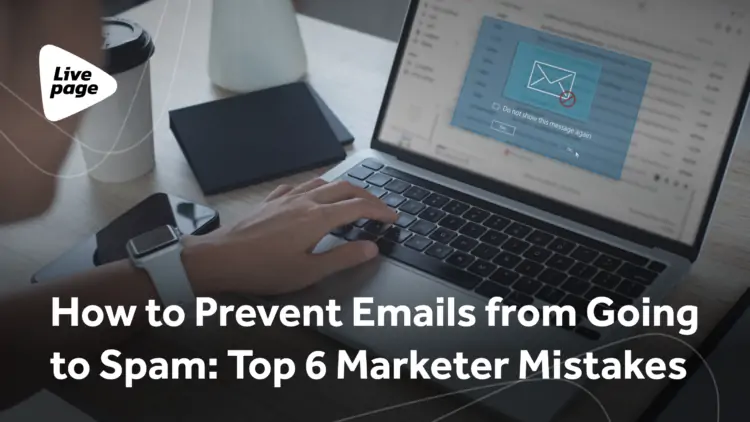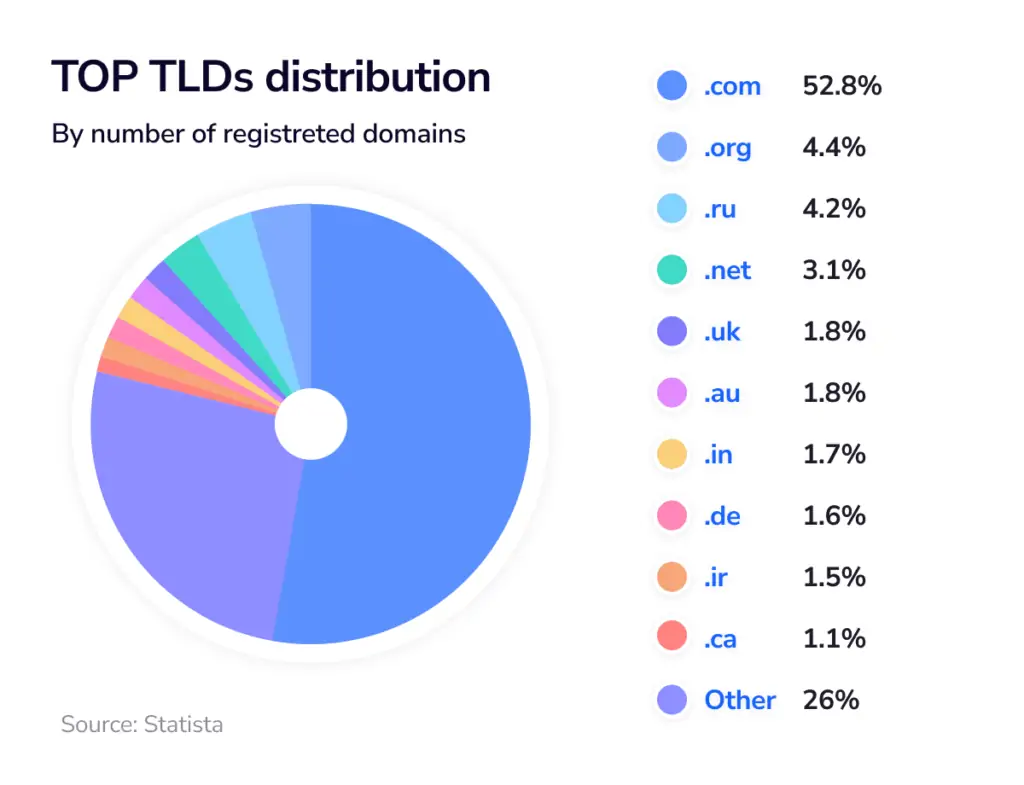
How to Prevent Emails from Going to Spam: Top 6 Marketer Mistakes

“We came up with a subject line, prepared the design, and approved the text. The final stage is launching the email campaign. But instead of hundreds of opens and millions of clicks on the link, you get a block from the ESP system due to a high delivery failure rate.” This is the nightmare of any email marketer.
How can you avoid emails going to spam? Let’s look at the mistakes that have the biggest impact on sending emails to spam.
What is spam?
Spam is defined as unwanted emails that are sent in large quantities. But it’s not just that in practice. Modern email services, concerned about the safety of users, are strengthening precautions that can affect even those emails that are not spam. It’s important to understand that to avoid being classified as spam, emails must not only be interesting to the audience but also not raise any questions for email providers.
What do statistics show?
According to Dataprot, almost 56.5% of all emails were identified as spam in 2022.
That’s an average of 122.33 billion messages worldwide every day. The highest indicator was in July 2021, when 283 billion out of 336 billion emails were identified as spam.
The most common type of spam is promotional emails, accounting for almost 36% of all spam messages.

Getting into spam is a sad story for any business, and knowing how to stop emails from going to spam is a key to a successful email campaign. Spam can bring more troubles in addition to the obvious ones, such as deteriorating email statistics and loss of trust from readers and providers. The domain is immediately compromised, and the risk of domain blocking jeopardizes both future and current email campaigns.
Domain reputation is an integral part of a successful email campaign. It indicates the assessment and information about the domain from which emails are sent. Reputation directly affects the future of emails. The better your domain rating is, the more chances are to prevent emails from going to spam.
Mistakes That Keep Your Email Going to Spam
1. Sending emails from a personal or unfit account
Regular email accounts are intended for personal correspondence. Mass emails will look suspicious to providers, and such emails are likely to end up in the spam folder.
To send emails on behalf of companies, you need an account with your own domain. Email domain is the name you use to send emails on behalf of your company. It should be professional and easily recognizable.
Here are some tips on how a professional email domain should look like:
- The domain name should match the name of your company or brand. For example, if your company is called “AB company” then “ab.com” might be a good option.
- Choose a short and clear domain name that is easy to remember.
- Domains with the .com extension are the most recognizable and trusted by recipients.

Preparing your email account is the next step that you shouldn’t neglect when planning mass email campaigns.
An unfit account is an account that does not meet the requirements for effective mass email marketing. Before sending mass emails, you should ensure that the account you plan to use has the necessary settings.
Here’s how to start setting up your account:
- registration with the email service;
- account setup;
- domain authentication;
- checking limits and restrictions.
2. No set-up authentication through SPF and DKIM records
DKIM (DomainKeys Identified Mail) is the authentication of the sender’s domain using a generated digital signature. This allows the recipient’s servers to verify that the email was sent from the declared domain, which improves its deliverability index.
The SPF record defines a list of servers that can send emails on behalf of this domain, as well as process emails sent from other servers.
❗️If your emails are not authenticated, they are also susceptible to hacking and phishing attempts. This automatically degrades the reputation of your domain.
You can generate SPF and DKIM in the ESP system you use to send your email campaigns. Example from SendPulse.
3. Buying or collecting an email database from open sources
When you buy or collect email databases from open sources, social media, or forums, you can have a number of problems and undesirable consequences, such as:
- Poor engagement
Email campaigns to an unverified database can lead to low engagement, low open rates, and many unsubscribes, which will worsen your reputation with spam filters.
- Low conversion rate
Recipients who are unfamiliar with you and your product will unlikely engage with your content.
- Spam
Sending emails to people who have not given their permission is considered spam. You should also keep in mind that spam is regulated by law in European countries (GDPR), which means it can get you into much more trouble than poor engagement.
How can you prevent emails from going to spam considering all above?
- Build your email database using legitimate methods, such as a website subscription form (double opt-in), and offer your contacts valuable content that matches their interests. This approach will significantly increase the loyalty of your audience.
- Carefully read the rules for sending emails in the countries you plan to include in your campaign.
4. Using prohibited words and symbols
Most email providers and recipients have built-in spam filters that look for specific keywords (spam triggers) commonly found in spam messages. This includes words related to fraud, medications, financial gains, and other popular spam topics. For example: “earn”, “free”, “chance”, “win”, “treatment”, “weight loss”, “guarantees”, “call”, as well as “$” and “100%” symbols.
You can find a list of the most common spam trigger words on HubSpot. This will give you some insight on how to avoid spam filters and stop emails going to spam.
How you can avoid prohibited words in emails:
– avoid using words or phrases that sound provocative;
– use professional vocabulary and realistic promises in your email body;
– test your own emails for spam before sending them to make sure they do not contain prohibited keywords.
❗️ Remember that spam filters are constantly evolving, so it’s important to keep up to date and customize your email campaigns to meet the latest requirements.
5. Failure to check domain reputation
Every domain has its history and reputation, and spam filters take this into account when evaluating your emails. Domain reputation affects how you are perceived by email services, spam filters, and recipients. This means that the success of your email campaigns directly depends on the state of your domain.
The domain is responsible for:
- Email deliverability rate
If your domain has a good reputation, email services will better deliver your emails to recipients’ inboxes. And a bad reputation can lead to blocked emails or direct delivery to the spam folder.
- Interaction with the audience
When your domain has a good reputation, recipients are more likely to open and engage with your emails, which can increase the effectiveness of your marketing campaigns.
- Website visibility
A bad domain reputation due to blacklisting can affect not only email deliverability but also the overall web traffic of your website. You may be blocked from some networks or websites.
How can you check your domain?
This is a popular tool for checking the reputation of an IP address and domain. It provides a score from 0 to 100, where a higher score indicates a better reputation.
If you use Gmail to send emails, you can sign up for Google Postmaster. This will give you access to information about open rates, undeliverable emails, click-throughs, and other metrics that affect your domain’s reputation in Gmail.
If you send emails to Outlook.com and Microsoft addresses, you can sign up for Microsoft Smart Network Data Services (SNDS). This allows you to track your IP and domain reputation with Microsoft.
6. Lack of record of spam complaint statistics
The spam complaint index should not exceed 0.5%. If the rate is higher than 1%, you should be wary.
What should you do if the spam complaint rate is increasing?
You should suspend your email campaigns to avoid blocking your domain and analyze what exactly could have led to such results.
Here are the most common reasons why users may send email campaigns to spam:
- Inappropriate content
To make your brand emails interesting and useful to your audience, you should segment users and send personalized campaigns. It is important to understand your audience well and take into account their needs. For example, conducting A/B testing will help you determine which approach and type of content resonates with your recipients the most.
- Too frequent or irregular emails
The frequency of sending mass emails depends on your niche and your customer communication strategy, so it’s not a universal unit. The standard frequency is 1–2 emails per week. You can experiment to determine the optimal number of emails for your business.
- Unnoticeable or missing unsubscribe link
Be sure to highlight the unsubscribe link so that uninterested users can easily unsubscribe from your brand’s emails. Firstly, many email providers send emails to spam because they have no unsubscribe option. Secondly, disinterested users will negatively affect the overall email statistics. In the absence of an unsubscribe option, they will only have to complain about spam.

Spam is a sensitive topic in any email campaign. There is no universal advice on how to stop emails going to spam, but there are many ways to keep your emails and your domain safe from the spam marker that we mentioned above.
If you have any questions about creating effective email campaigns, how to stop your email from going to spam, what metrics to pay attention to, and what goals email marketing solves, we recommend reading our article 10 Common Questions About Email Marketing in 2023.
And if you’re planning to launch an email campaign but are worried about getting into spam, don’t hesitate to contact Livepage! We’ll be happy to help you get high results from your campaign and show you how to build an effective spam-free strategy using your business as an example. Get to know how to stop email from going to spam today!
FAQ
Can spam filters have different spam detection criteria?
Yes, the criteria for spam filters are constantly changing, as spammers’ approaches change as well. It is also worth considering that each country has local spam filters, and what is not considered spam in Ukraine may be considered as such in Germany. Therefore, for the safety of your company and domain, you should carefully study the spam regulations in the country you need.
How do I check emails for spam before sending them?
To check and prevent emails from winding up in spam, you can use the ESP system of your choice, if it has such a feature, or you can use publicly available spam filters. For example: MailTester or MailMonitor.
What rules should I follow to avoid emails going to spam?
Here are a few tips on how to keep emails from going to spam:
- Be sure to set up domain authentication.
- Do not send emails to unverified contacts.
- Track the statistics for each email.
- Make sure that your content is valuable to your target audience.



















